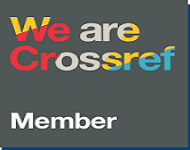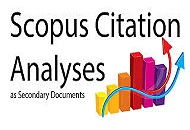Development of Augmented Reality Learning Media Based on Assemblr Edu to Improve Students' Creativity Abilities
DOI:
https://doi.org/10.33394/jp.v12i4.16817Keywords:
Learning Media, Augmented Reality, Assemblr Edu, CreativityAbstract
The purpose of this study is to design digital learning media that utilize Augmented Reality (AR) technology through the Assemblr Edu platform on the topic of Earth’s Rotation and Revolution to enhance students’ creativity. This research employed a Research and Development (R&D) method using the ADDIE model, which consists of five main stages: analysis, design, development, implementation, and evaluation. Data were collected through interviews and questionnaires administered to subject matter experts, media experts, teachers, and students. Both qualitative and quantitative techniques were used for data analysis. The validation results showed that the developed learning media achieved a feasibility score of 86% from material experts and 95% from media experts, both of which are categorized as very feasible. Meanwhile, responses from teachers and students obtained scores of 95% and 84%, respectively, classified as very good. Overall, these findings indicate that Assemblr Edu–based AR learning media are suitable for use in science learning and have strong potential to enhance students’ creativity and understanding of abstract concepts.
References
Afriyadi, H., & Hayati, N. (2023). Media Pembelajaran Berbasis Digital.
Alfitriani, N., Maula, W. A., & Hadiapurwa, A. (2021). Penggunaan Media Augmented Reality dalam Pembelajaran Mengenal Bentuk Rupa Bumi. Jurnal Penelitian Pendidikan, 38(1), 30–38. https://doi.org/10.15294/jpp.v38i1.30698
Ardhani, A. D., Ilhamdi, M. L., & Istiningsih, S. (2021). Pengembangan Media Pembelajaran Berbasis Permainan Monopoli pada Pelajaran IPA. Jurnal Pijar Mipa, 16(2), 170–175. https://doi.org/10.29303/jpm.v16i2.2446
Aulia, T. U., Bandarsyah, D., & Sulaeman, S. (2022). Dampak Game Mobile Legends Terhadap Pola Interaksi Sosial Siswa Kelas V di Sekolah Dasar. Jurnal Educatio FKIP UNMA, 8(3), 899–907. https://doi.org/10.31949/educatio.v8i3.2710
Chairudin, M., Nurhanifah, N., Yustianingsih, T., Aidah, Z., Atoillah, A., & Sofian Hadi, M. (2023). Studi Literatur Pemanfaatan Aplikasi ASSEMBLR EDU Sebagai Media Pembelajaran Matematika Jenjang SMP/MTS. Communnity Development Journal, 4(2), 1312–1318. https://id.edu.assemblrworld.com/
Diahratri, K. (2022). Efektivitas Penggunaan Youtube Sebagai Media Belajar Mahasiswa Program Studi Pendidikan Informatika STKIP PGRI Pacitan. Skripsi. Pacitan. Khusnul Diahratri.2022, 5(3), 248–253.
Hasan, M., Milawati, Darodjat, Khairani, H., & Tahrim, T. (2021). Media Pembelajaran. In Tahta Media Group.
Legina, N., & Sari, P. M. (2022). Pengembangan Media Pembelajaran Interaktif Articulate Storyline Berbasis Keterampilan Berpikir Kritis pada Pembelajaran IPA bagi Siswa Sekolah Dasar. Jurnal Paedagogy, 9(3), 375. https://doi.org/10.33394/jp.v9i3.5285
Lestari, I. (2019). Kreativitas dalam Konteks Pembelajaran (Issue August).
Miqwati, M., Susilowati, E., & Moonik, J. (2023). Implementasi Pembelajaran Berdiferensiasi Untuk Meningkatkan Hasil Belajar Ilmu Pengetahuan Alam Di Sekolah Dasar. Pena Anda: Jurnal Pendidikan Sekolah Dasar, 1(1), 30–38. https://doi.org/10.33830/penaanda.v1i1.4997
Mislah, M., Hayat, M. S., & Siswanto, J. (2024). Profil Kreativitas dan Keterampilan Berpikir Kritis Siswa dalam Pembelajaran Fisika di Madrasah Aliyah. Edukatif : Jurnal Ilmu Pendidikan, 6(4), 4066–4077. https://doi.org/10.31004/edukatif.v6i4.7288
Mukaromah, D. W. I. S., Studi, P., Matematika, T., Tadris, J., Tarbiyah, F., Ilmu, D. A. N., Negeri, U. I., Kiai, P., Saifuddin, H., & Purwokerto, Z. (2025). Pengembangan Media Pembelajaran Matematika Berbasis Augmented Reality Menggunakan Assemblr Edu Untuk Meningkatkan Kemampuan.
Nurfadhillah, S., Ningsih, D. A., Ramadhania, P. R., & Sifa, U. N. (2021). Peranan Media Pembelajaran Dalam Meningkatkan Minat Belajar Siswa SD Negeri Kohod III. PENSA : Jurnal Pendidikan Dan Ilmu Sosial, 3(2), 243–255. https://ejournal.stitpn.ac.id/index.php/pensa
Nurjannah, F. (2019). Pengembangan penelitian. 34–47.
Okpatrioka. (2023). Research And Development (R&D) Penelitian Yang Inovatif Dalam Pendidikan. Dharma Acariya Nusantara: Jurnal Pendidikan, Bahasa Dan Budaya, 1(1), 86–100. https://doi.org/10.47861/jdan.v1i1.154
Parmadi, T., Nurcahyo, M. A., & Listiarini, Y. (2023). Pengembangan Media Miniatur Sistem Tata Surya 3D terhadap Pengenalan Sistem Tata Surya Kelas VI SD. Jurnal Edukasi, 1(3), 255–270. https://doi.org/10.60132/edu.v1i3.174
Pertiwi, D. L., & Putra, L. D. (2023). Pengembangan Media Pembelajaran Video Animasi Interaktif Materi Fotosintesis Kelas Iv Di Sekolah Dasar. Pendas : Jurnal Ilmiah Pendidikan Dasar, 08(3), 3334–3346.
Primadona, I., Zakir, S., Efriyanti, L., & Jasmienti, J. (2024). Perancangan Media Pembelajaran Berbasis Augmented Reality (AR) Menggunakan Assemblr Edu Pada Mata Pelajaran Biologi Di MAN 4 Agam. Education Achievement: Journal of Science and Research, 5(3), 907–923. https://doi.org/10.51178/jsr.v5i3.2099
Purnama Sari, U., Mayadiana Suwarma, D., Endrawati Subroto, D., Putu Agus Dharma Hita, I., Studi PGMI, P., Tarbiyah, F., Al-Quraniyah Manna, S., Mulia, P., Ps Manna, K., & Bengkulu Selatan, K. (2024). Pengaruh Pemanfaatan Teknologi Augmented Reality terhadap Tingkat Ketertarikan Belajar Siswa dalam Penyampaian Materi Pembelajaran. Journal on Education, 06(03), 17672–17679.
Rahayu, F. (2022). Pengembangan Kreativitas Anak Melalui Startegi 4P (Person, Press, Process, Product). Jurnal Ilmiah Mandala Education, 8(3), 2406–2414. https://doi.org/10.58258/jime.v8i3.3779
Rini. (2024). Pelatihan Pembuatan Media Pembelajaran Interaktif Menggunakan Assemblr Edu (AR) Dalam Mendukung Kegiatan Pembelajaran Bagi Guru SMK. Gudang Jurnal Pengabdian Masyarakat, 2(1), 36–40. https://gudangjurnal.com/index.php/gjpm/article/view/283%0Ahttps://gudangjurnal.com/index.php/gjpm/article/download/283/277
Sacra, S., Sains, J., Kasus, S., Belajar, B., Hatiku, B., Solear, K., & Tangerang, K. (2022). Penerapan Metode Marker Based Tracking Augmented Reality Sebagai Media Pembelajaran Pengenalan Tata Surya. 2(4).
Salmilah, S., & Hisbullah, H. (2024). Optimalisasi Pembelajaran Kurikulum Merdeka di Madrasah Melalui Pemanfaatan Media Digital. Jurnal Pengabdian Literasi Digital Indonesia, 3(2), 80–88. https://doi.org/10.57119/abdimas.v3i2.124
Saputra, N. A., Avrillia, D., Cristofel, J., Informatika, T., Teknik, F., Nusantara, U., & Kediri, P. (2025). Penerapan Augmented Reality dalam Pembelajaran Visualisasi Planet Bumi bagi Siswa MI Miftahush Shibyan. 4, 526–531.
Saputra, W. (2022). pengembangan media pembelajaran trainer sistem bahan bakar diesel tipe in-line. 1(1), 40–49.
Sari, P. M., & Dwi, S. (2022). Pengembangan Media Pembelajaran Video Animasi Berbasis Keterampilan Proses Sains Pada Pembelajaran Ipa. 5, 316–323.
Septiana, I. G. Y., Wibawa, I. M. C., & Trisna, G. A. P. S. (2022). Interactive Multimedia Based on Articulate Storylines in the Topic of Plant Anatomy and Physiology. In International Journal of Elementary Education: Vol. 6 (2).
Tarigan, E. D. P. B., Gultom, M., Lubis, S. L. G., & Khairunnisa. (2024). Penerapan Media Pembelajaran Berbasis Digital Pada Mata Pelajaran IPA di SD Negeri 060877 Medan Perjuangan. Fonologi : Jurnal Ilmuan Bahasa Dan Sastra Inggris, 2(2), 237–246. https://doi.org/10.61132/fonologi.v2i2.746
Tuhuteru, S., Kaiwai, O., Douw, L., Oni, W., Willi, F., Agapa, R., Kogoya, I., Mabel, R., Karoba, M., & Tabuni, I. (2021). PkM Pemanfaatan Teknologi Augmented Reality untuk Meningkatkan Kreativitas Media Ajar IPA. Abdimas Indonesia, 1(2), 26–32. https://dmi-journals.org/jai/article/view/226
Waruwu, M. (2024). Metode Penelitian dan Pengembangan (R&D): Konsep, Jenis, Tahapan dan Kelebihan. Jurnal Ilmiah Profesi Pendidikan, 9(2), 1220–1230. https://doi.org/10.29303/jipp.v9i2.2141
Published
How to Cite
Issue
Section
Citation Check
License
Copyright (c) 2025 The Author(s)

This work is licensed under a Creative Commons Attribution-ShareAlike 4.0 International License.
License and Publishing Agreement
In submitting the manuscript to the journal, the authors certify that:
- They are authorized by their co-authors to enter into these arrangements.
- The work described has not been formally published before, except in the form of an abstract or as part of a published lecture, review, thesis, or overlay journal.
- That it is not under consideration for publication elsewhere,
- That its publication has been approved by all the author(s) and by the responsible authorities tacitly or explicitly of the institutes where the work has been carried out.
- They secure the right to reproduce any material that has already been published or copyrighted elsewhere.
- They agree to the following license and publishing agreement.
Copyright
Authors who publish with Jurnal Paedagogy agree to the following terms:
- Authors retain copyright and grant the journal right of first publication with the work simultaneously licensed under a Creative Commons Attribution License (CC BY-SA 4.0) that allows others to share the work with an acknowledgment of the work's authorship and initial publication in this journal.
- Authors are able to enter into separate, additional contractual arrangements for the non-exclusive distribution of the journal's published version of the work (e.g., post it to an institutional repository or publish it in a book), with an acknowledgment of its initial publication in this journal.
- Authors are permitted and encouraged to post their work online (e.g., in institutional repositories or on their website) prior to and during the submission process, as it can lead to productive exchanges, as well as earlier and greater citation of published work.
Licensing for Data Publication
-
Open Data Commons Attribution License, http://www.opendatacommons.org/licenses/by/1.0/ (default)






